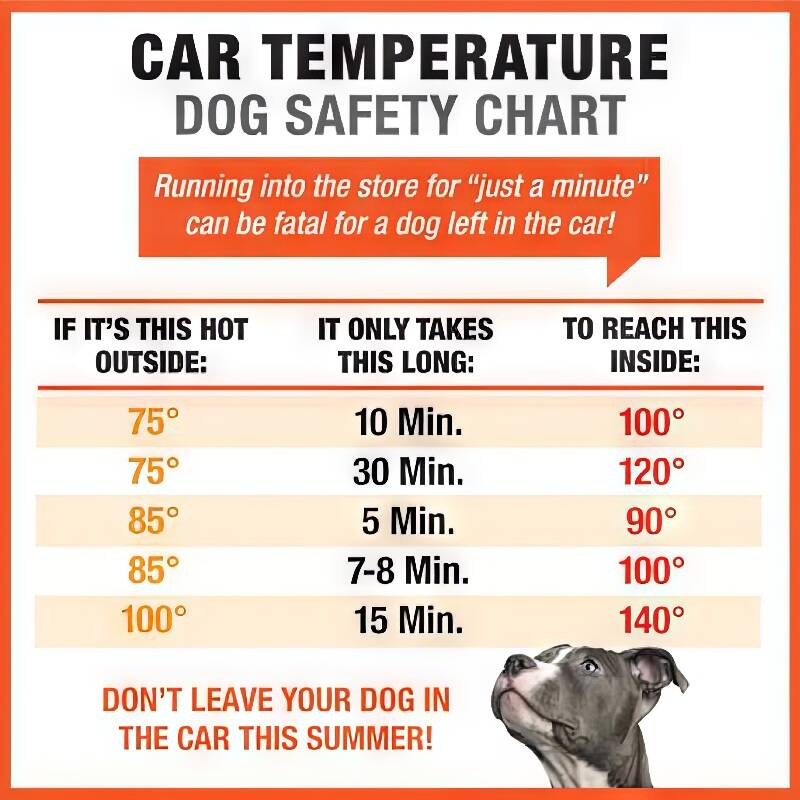We’ve all noticed the change in the weather. Green pollen dust coats our windshields. Sunset inching past 8:00 p.m.
Temperatures are ten or more degrees higher than in March, and getting warmer week-by-week as we head towards May. Many of us are gearing up for the traditional summer travel period.
Warm weather and summer travel bring two important things to think about — the safety of our pets, and our own COVID safety.
Keep pets safe from hot cars
You would not knowingly expose your dog to 100-degree heat — that’s hot enough to kill your furry family member. What you may not know is how quickly a car turns into an oven on even a mild day.
When it’s even a little warm outside — maybe 75 degrees — the interior of your car can hit 100 degrees in just ten minutes. Cracking your window does little good, because that does not allow for enough air circulation to keep the interior of the car cool.
Travel Season and COVID
Here are two things to keep in mind as you look forward to some time on the road in the coming months.
First, every year since the pandemic struck in 2020 there have been two spikes in COVID cases, with one of those happening during the summer.
Second, case investigations by Vashon’s Medical Reserve Corps (MRC) show that COVID is often associated with travel, such as holiday family gatherings, and mingling with crowds during travel.
MRC Paxlovid Tips: Start thinking now about how you might seek Paxlovid antiviral medicine if you contract COVID, at home or while traveling. We received these Paxlovid tips from the MRC:
It’s important to begin taking Paxlovid within five days of your first symptoms, so don’t procrastinate about testing or obtaining the medication.
Paxlovid is essential for those at increased risk who are not optimally protected from COVID. That means people who have never had COVID or who have not been vaccinated for COVID. Studies have shown that Paxlovid prevents more than 90% of severe COVID cases for people in these categories.
Even people who have some immunity from vaccination or from previously having had COVID benefit from taking Paxlovid to help prevent severe disease.
The benefit of Paxlovid for long COVID is less clear, primarily because defining long COVID remains challenging.
Obtaining Paxlovid: Paxlovid has been available by prescription for more than two years. Here’s a snapshot of options for obtaining it:
- Call your healthcare provider to discuss whether Paxlovid is appropriate for you.
- Call your health insurance provider. Many have dedicated teams to assist their clients with COVID. For example, at Kaiser, you would call the Consulting Nurse Service.
- If your health insurance does not include drug coverage for Paxlovid, you can get access at reduced or no cost from Pfizer
- Call Vashon Pharmacy at 206-463-9118. The pharmacist can prescribe Paxlovid under many circumstances.
- Call Vashon’s Medical Reserve Corps helpline at 844-469-4554. Leave a message and someone will call you back. (The helpline is no longer staffed 24/7.)
Emergency Water Checkup: Prepare in a Year Continues
For the last two weeks, we have summarized how to safely store water and, if necessary, how to make it safe to drink. This week, we offer this checklist to help you maintain the safety of your stored water. It’s precious for emergency survival because most people can survive only three days without H2O.
Check Twice per Year: Pick two easy-to-remember dates about six months apart and make those days your emergency preparedness checkup days. For example, pick two household birthdays as long as they are six months apart. You can even think of your household checkup days as quirky birthday gifts.
Keep Plenty on Hand: Do you have a gallon of water per day for each member of your household? For our recommended three-week supply of emergency resilience essentials, that means storing 21 gallons per person. While you are at it, be sure all household members have emergency water in their go kits (and do not forget pets).
Check Expiration Dates: For water you have stored yourself, use a marker or labeler to put an expiration date on the container. Most experts recommend replacing your homemade supply every six months. For commercial bottled water, go by the expiration date printed on the label.
Check Your Water Disinfection Setup: This could mean checking the expiration date on your chlorine dioxide drops. Or make sure your ultraviolet-light water purifier has a full charge. Does your water filter have a good flow of water? Do you have the fuel you might need to boil water?
Make Sure Your Storage Location Is Safe: Is the location structurally protected during an earthquake? Do you split your water supply between two or more home locations so you have redundancy? Be sure to store your water away from toxic chemicals such as cleaners.
Practice Using Your Water Supply: Have the whole family get together to try out your emergency water system. Does everybody know where the emergency water is stored? Water is heavy — can little household members get water from your supply? Does everybody know how to use your disinfection setup?



